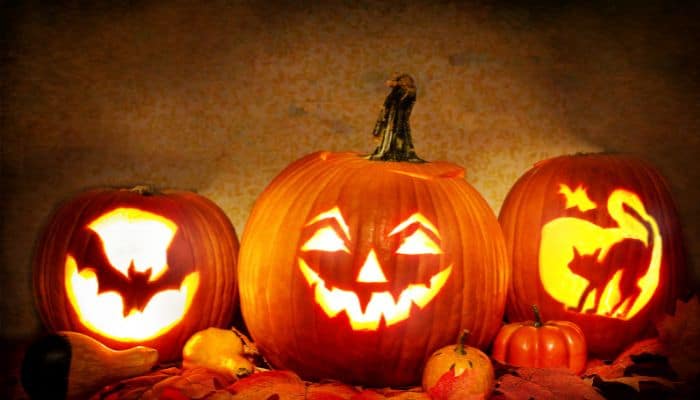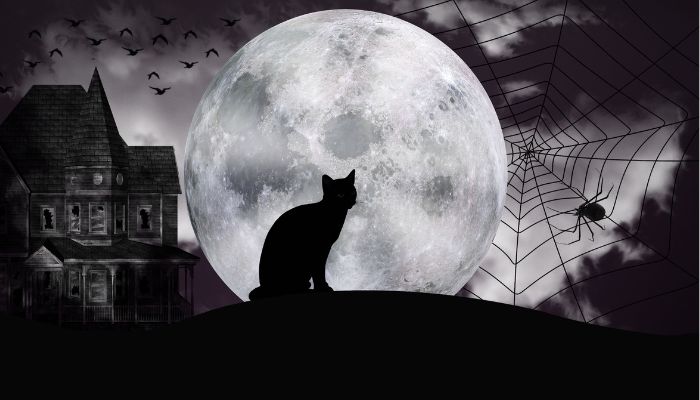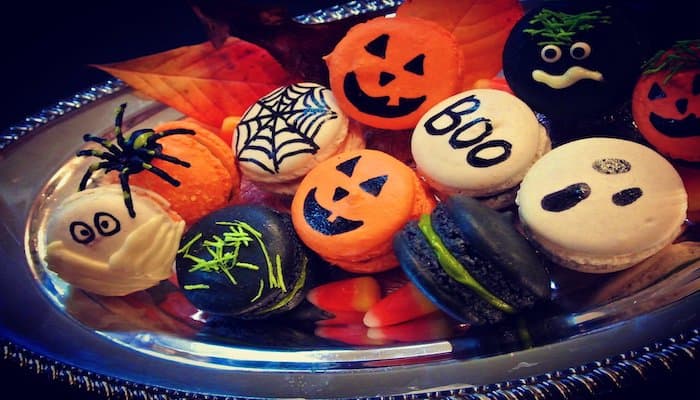French Halloween : Everything you need to know
Halloween in France is a unique blend of tradition and modern celebration. While the holiday is often associated with trick-or-treating and carved pumpkins, it may also holds cultural significance tied to La Toussaint (All Saints’ Day), celebrated on November 1st. Knowing French Halloween vocabulary will enhance your experience and make the holiday more enjoyable.
In recent years, Halloween has gained a lot of popularity in France. Many areas in France host events that blend Halloween customs with local traditions, creating a festive atmosphere. However, its traditions are not as deeply rooted as in some other countries, like the United States.
Learning a few common phrases will not only help you navigate the celebrations but also connect you to locals during conversations. Whether you’re planning to decorate your house or simply enjoy sweet treats, knowing the terminology will make your Halloween experience much more authentic and engaging.

1. Origins and Significance
Halloween in France has deep historical roots and connections to French culture. Various traditions and celebrations highlight its significance. Understanding these aspects enriches your appreciation of Halloween in France.
1.1 Historical Roots of Halloween
Halloween’s origins trace back to the ancient Celtic festival of Samhain. This festival marked the end of the harvest season and the beginning of winter. People believed it was a time when spirits could cross over into the living world.
In France, especially in regions with Celtic influence like Brittany, many customs from Samhain persist. The Celts lit bonfires and wore costumes to ward off harmful spirits. These practices laid the groundwork for modern Halloween festivities, merging pagan traditions with later Christian customs.
1.2 All Saints' Day in France
La Toussaint (All Saints’ Day) is celebrated on November 1st. This holiday honors all saints and martyrs, focusing on remembrance and prayer. In France, it’s a time when families visit cemeteries with flowers to honor deceased loved ones.
Nowadays, some French people partake in festivities that blend Halloween with the reverence of La Toussaint. Schools and communities often organize activities that reflect both spooky and sacred themes. Both holidays occur in October and November, highlighting themes of life and death. While Halloween focuses on apparitions and disguises, La Toussaint embraces remembrance and respect for those who have passed.
1.3 Halloween, a Commercial Event ?
On the other hand, others might take a more cautious stance on Halloween in France. Indeed, it is viewed as a commercial celebration coming from the United States. Decoration and costumes become available in stores earlier and earlier each year.
Discussions arise regarding Halloween’s role in French culture, with some arguing that it could overshadow religious customs like All Saints’ Day. Halloween can therefore represent a form of commercial extravagance for some French people.
2. Vocabulary and Language
Understanding Halloween vocabulary in French can enhance your experience during the holiday. Here are key terms and phrases to avoid common mistakes during Halloween in France.
2.1 Common French Halloween Terms
Knowing basic Halloween vocabulary helps in conversations and celebrations. Here are some essential terms you might encounter:
- Araignée (f) : This word means “spider,” and its “Toile d’araignée” (spider web).
- Avoir peur de : It means “to have a fear of”.
- Cimetière (m) : Translates to “cemetery,” linked to the spooky atmosphere of the holiday.
- Citrouille (f): This is the French word for “pumpkin”, the key symbol of Halloween.
- Déguisement (m) : Means “costume”, essential for the kids.
- Épouvantail (m) : Means “scarecrow,” a figure you might find in autumnal decorations.
- Effrayant(e) : This is the adjective for “scary”. Effrayer is the verb.
- Loup-garou (m) : This is a werewolf.
- Monstre (m) : Means “monster,” a common character associated with Halloween.
- Sculpter une citrouille : to carve a pumpkin
- Tête de mort (f) : Means a “skull”.
Like Noël (Christmas) and Pâques (Easter), Halloween doesn’t have any article. We says “Halloween” and not “l’Halloween” or “le Halloween“.
2.2 Iconic Halloween Figures
Several figures are closely associated with Halloween such as :
- La sorcière (the witch) is one of the most iconic characters. Often depicted with a pointed hat and a cauldron, witches symbolize magic and mystery.
- Other notable figures include le vampire (the vampire), known for its pale skin and fangs.
- Le fantôme (the ghost), which represents spirits of the departed.
- Les squelettes (skeletons) are also popular, often seen in decorations, reminding you of mortality.
- Another well-known symbol of superstition is le chat noir (the black cat).
- Les chauve-souris (bats) are an additional important creature. Linked to darkness and the night, they often appear in decorations.
- Les zombies (the zombies) have gained popularity in recent years, representing the undead.
Each of these figures plays a role in Halloween imagery and festivities, creating a unique atmosphere of fun and fear.
2.3 Related French Phrases and Sayings
Certain phrases capture the spirit of Halloween. Here are a few worth knowing:
- Des bonbons ou un sort: This means “trick or treat.” It’s a common phrase spoken by children while going door to door.
- Je me déguise en sorcière: This means “I am dressing up as a witch.” It reflects the tradition of wearing costumes.
- Attention aux monstres!: This phrase means “Beware of monsters!” It adds to the playful spooky vibe of the day.
- Sonnez à la porte : Ring the doorbell.
Learning these words and phrases can make your Halloween celebrations in France more enjoyable and engaging.

3. Cultural Practices and Activities
Although Halloween is less important in France than in the US, it still features a mix of tradition and modern celebration. Festive activities, books and movies reflect both local customs and the growing influence of American Halloween practices.
3.1 Celebrating Halloween in France
During Halloween you might see children wearing masks and various outfits, from scary monsters to funny characters. In France, common costume choices may include classic favorites like princesses, pirates, witches and ghosts. You might also see costumes that represent animals, popular characters from movies, or even aliens.
For several years now, amusement Parks such as Parc Asterix or Disneyland Paris have also organized :
- frightening encounters in the haunted houses
- Halloween-themed attractions
- wickedly-fun entertainment.
Trick-or-treating is becoming more popular. Kids, often in groups, knock on doors asking for candies. The phrase “des bonbons ou un sort” (treats or a trick) encourages playful interactions.
In some areas, spooky attractions draw families looking for a fun scare. You may encounter events like Halloween parties at schools or community centers where everyone can enjoy games and activities.
3.2 Decorative Elements and Set-Up
Decorating for Halloween is an essential part of the celebration. You can start by carving a pumpkin into a jack-o’-lantern to place by your window or your front door. This classic symbol adds a festive touch. Many people like to use spider webs and other spooky decorations. Hanging ghost figures or skeletons from trees can create a haunted atmosphere.
You might also choose to light candles to add to the mood. Overall, the excitement of Halloween grows each year in France, blending traditional and modern practices.
4. Food and Confectionery
Finally, when celebrating Halloween in France, you may experience a mix of traditional treats and unique recipes that enhance the festive spirit. Explore popular candies and dishes that bring the holiday to life !
4.1 Traditional Halloween Treats and Patisseries
In France, Halloween is not an official holiday, but it is embraced with enthusiasm, especially by children. They often collect candies during festivities. Some popular candies include chocolate, gummy sweets, and wrapped treats.
Everyone knows that the French have a special talent for creating delicious food, and their desserts are no exception. With everything from exquisite pâtisseries to delightful bonbons, France has established itself as a top destination for satisfying sweet cravings worldwide. So, why should Halloween be any exception? Typically, you might find:
- Macarons d’Halloween – Decorated with sugar spiderwebs or a jack-o-lantern flavored with pumpkin pie spice.
- Pommes d’Amour Empoisonnées – A delicious candied apple coated in black caramel.
- Gâteau à la Citrouille – A tasty and light pumpkin cake.
These delicious treats are often shared among friends and family.
Photo © Food La La

4.2 French Halloween-Inspired Recipes
You can create some fun Halloween-inspired dishes to enjoy during the celebration. These recipes often feature seasonal ingredients as follows :
- Une soup de potiron (a pumpkin soup), a comforting dish that highlights the pumpkin’s rich flavor.
- Un gratin d’Halloween (a Halloween gratin), made with carottes, pumpkins, ham, cheese and nutmeg.
- Une quiche Halloween, (a Halloween quiche), a delicious twist to the Quiche Lorraine.
The detail that makes to distinguish “une citrouille” and “un potiron” : the peduncle (the tail which attaches the fruit to the supporting stem). For la citrouille : the peduncle is hard, fibrous and angular whereas for le potiron: the peduncle is soft, cylindrical at the top and flared at the base.
Life in France is pretty colorful, even in this darkest and spookiest season of the year ! If you’d like to experience it yourself and enjoy the benefits of speaking French, feel free to contact me.
